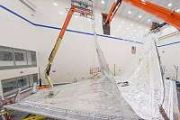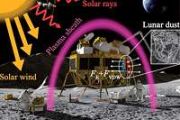
Copernical Team
Week in images: 06-10 February 2023

Week in images: 06-10 February 2023
Discover our week through the lens
Earth from Space: Swedish landscape
 Image:
Agricultural fields that surround the cities of Lund and Malmö in Sweden are pictured in this image, captured by the Copernicus Sentinel-2 mission.
Image:
Agricultural fields that surround the cities of Lund and Malmö in Sweden are pictured in this image, captured by the Copernicus Sentinel-2 mission. Juice on final stretch for launch to Jupiter
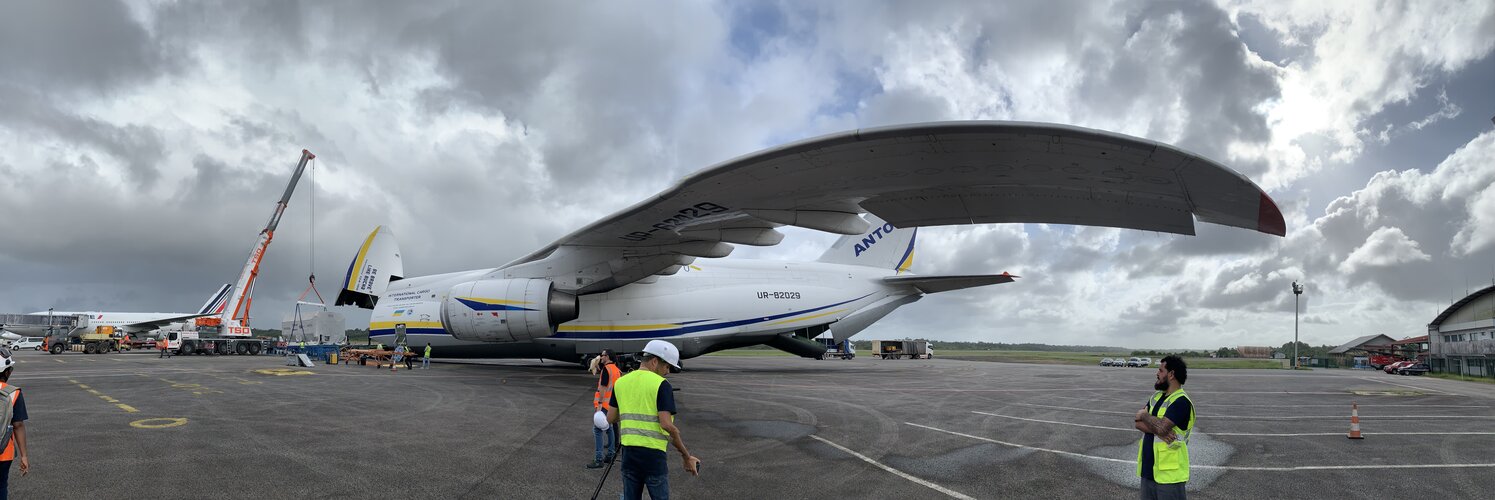
ESA’s mission to explore Jupiter and its largest moons has safely arrived at Europe’s Spaceport in French Guiana, where final preparations for its April launch are now underway.
The Jupiter Icy Moons Explorer – better known as Juice – arrived on 8 February at Félix Eboué airport in Cayenne by a special Antonov Airlines An-124 cargo flight from Toulouse, France, where prime contractor Airbus completed a nearly decade-long process of concept, design, testing and construction. Now, the spacecraft will undergo final testing and inspection by engineers from ESA and Airbus before it is fueled up and mounted on
Can you spot it?
 Image:
Can you spot it?
Image:
Can you spot it? Women and girls in science: the team helping to take us to Mars
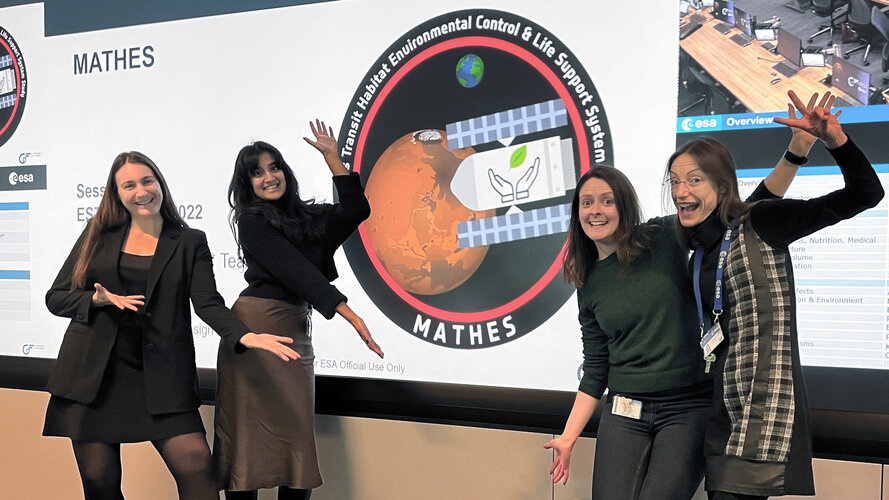
ESA celebrates the International Day of Women and Girls in Science this 11 February, and highlights the story of the first all-female Systems Team in ESA’s Concurrent Design Facility, the place where ideas for new space missions, systems and structures take definite shape.
China space station crew completes spacewalk
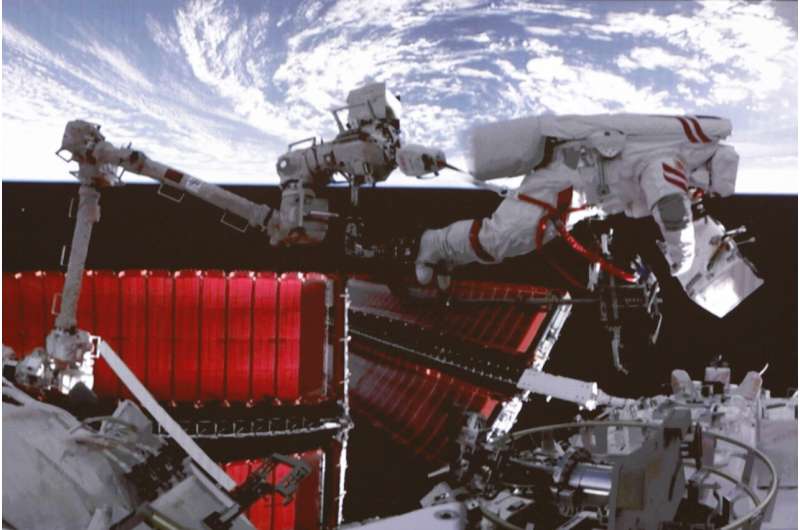
The crew of China's orbiting space station has completed the first of several planned spacewalks of their six-month mission, pushing such activities into the realm of routine for the country's astronauts.
SpaceX ignites giant Starship rocket in crucial pad test
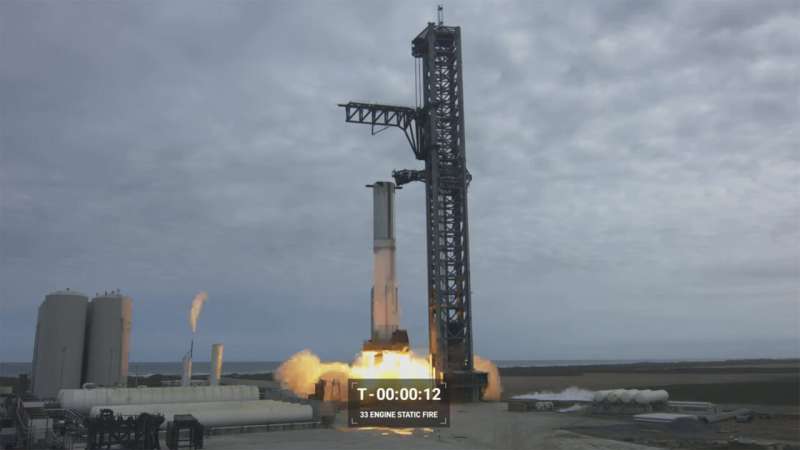
SpaceX is a big step closer to sending its giant Starship spacecraft into orbit, completing an engine-firing test at the launch pad on Thursday.
Thirty-one of the 33 first-stage booster engines ignited simultaneously for about 10 seconds in south Texas. The team turned off one engine before sending the firing command and another engine shut down—"but still enough engines to reach orbit!" tweeted SpaceX's Elon Musk.
Musk estimates Starship's first orbital test flight could occur as soon as March, if the test analyses and remaining preparations go well.
SES, ThinKom and Hughes enable multi-orbit resilient connectivity for critical airborne missions
 SES, ThinKom and Hughes demonstrated revolutionary high-performance multi-orbit service capable of supporting multiple solutions for government airborne missions, the companies announced Wednesday. The open architecture ThinKom ThinAir Ka2517 airborne satcom terminal was successfully demonstrated over SES's Medium Earth Orbit (MEO) and Geostationary (GEO) satellite networks during testing at Thi
SES, ThinKom and Hughes demonstrated revolutionary high-performance multi-orbit service capable of supporting multiple solutions for government airborne missions, the companies announced Wednesday. The open architecture ThinKom ThinAir Ka2517 airborne satcom terminal was successfully demonstrated over SES's Medium Earth Orbit (MEO) and Geostationary (GEO) satellite networks during testing at Thi ISRO launches second Small Satellite Launch Vehicle-SSLV-D2
 The Small Satellite Launch Vehicle (SSLV) successfully lifted off from the Satish Dhawan Space Centre on the island of Sriharikota, India on Thursday at 9:18 a.m. local time (03:48 UTC), six months after its SSLV-D1 maiden flight in August 2022, which failed to reach a stable orbit.
An analysis "revealed that there was a vibration disturbance for a short duration on the Equipment Bay (EB)
The Small Satellite Launch Vehicle (SSLV) successfully lifted off from the Satish Dhawan Space Centre on the island of Sriharikota, India on Thursday at 9:18 a.m. local time (03:48 UTC), six months after its SSLV-D1 maiden flight in August 2022, which failed to reach a stable orbit.
An analysis "revealed that there was a vibration disturbance for a short duration on the Equipment Bay (EB) Shenzhou XV astronauts take their first spacewalk
 Shenzhou XV mission crew members have just concluded their first spacewalk, according to the China Manned Space Agency. The agency said in a news release early on Friday morning that mission commander Major General Fei Junlong and Senior Colonel Zhang Lu completed a seven-hour spacewalk and returned to the Wentian science module at 12:16 am (Beijing Time). The third crew member, Senior Colonel D
Shenzhou XV mission crew members have just concluded their first spacewalk, according to the China Manned Space Agency. The agency said in a news release early on Friday morning that mission commander Major General Fei Junlong and Senior Colonel Zhang Lu completed a seven-hour spacewalk and returned to the Wentian science module at 12:16 am (Beijing Time). The third crew member, Senior Colonel D 





